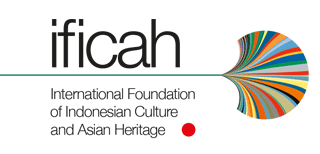Sword / Long knife „labo to dolo“ „dua lalan“
| Object | Sword / sword knife, long knife, “labo to dolo” “dua lalan |
| Culture | Sulawesi, central highlands, Sadan-Toraja |
| Time |
18/19th century |
| Dimensions | Length 67,50 cm |
| Material | Wood, steel, rattan |
The blade of this labo sword knife is relatively heavy and top-heavy and has a shape that is particularly common among Sa’dan-speaking Toraja. The back is slightly lowered, the cutting line describes a slight S-line. In the tip area, where the blade is widest, the cutting edge draws up to the back in a relatively sharp arc. The cross-section is flat-biconvex, the cutting edge is thinly ground and quite sharp. The blade has a pronounced forged structure and is definitely forged from locally melted metal (pamor luwuk), which is visually reflected in stringy light veins. These have an organic appearance and are essential for the “soul” of the blade, as smelting from the local ore, which comes from the mountains, the seat of the ancestors, is like a magical, transformational process. The blade is blackish patinated with sulphur arsenic (realgar).
The pommel shape can be interpreted as a stylised hornbill. The association of the hornbill with ritualised warfare is known throughout the Metal Age Austronesian cultural area. As a companion and guide of souls into the afterlife, the hornbill taught people in prehistoric times how to wage war and cultivate crops.
The headhunting or sacrifice of humans and buffaloes carried out with these blades is related to the elaborate burial rites of the Toraja, which serve to raise the status of the ancestors in the hereafter. This was probably originally designed to accompany the dead. The burial can take many years and several stages and can also generate enormous expenses: a gradual process to reach the domain of the souls, puya. During the celebrations, the mummified dead are repeatedly redressed and carried through the villages – a process that has now become a tourist attraction. The traditional cosmology of the aluk to dolo includes the pusaka concept, in this sense the immaterial “enrichment” of inanimate objects with the soul material of the ancestors. Therefore, the origin of the metal and the melting process are of special spiritual importance, as are the previous owners, whose souls remain in the blade, so to speak, in part. This concept is only partially known in the Indian metropolitan area and can be regarded as a specifically “Austronesian” (today: Indonesian, Mela/Polynesian) immaterial cultural asset.







